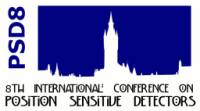Speaker
Mr
Andrea Mattera
Description
Boron Neutron Capture Therapy (BNCT) is a radiotherapic technique exploiting the alpha particles produced after the irradiation of the isotope 10 of boron with thermal neutrons in the capture reaction ^{10}B(n,alpha)^{7}Li. It is used to treat tumours that for their features (radioresistance, extension, localization near vital organs) cannot be treated through conventional photon-beams radiotherapy.One of the main limitations of this technique is the lack of specificity (i.e. the ability of localizing in tumour cells, saving the healthy tissues) of the compounds used to carry the isotope ^{10}B in the organs to be treated.
This work, developed in the framework of the INFN PhoNeS project, describes the possibility of boron imaging performed exploiting the neutrons photoproduced by a Linac (the Clinac 2100C/D of the S.~Anna Hospital Radiotherapy Unit in Como, Italy) and detecting the alphas with a non-depleted microstrip silicon detector: the result is a 1D scan of boron concentration. Several boron doped samples have been analyzed, from solutions of H_3BO_3 (reaching a minimum detectable amount of 25ng of ^{10}B to biological samp les of urine containing BPA and BSH (the two molecules currently used for the clinical trials in BNCT) and ^{10}BPA-Fructose complex perfused human lung samples. Further measurements are under way to calibrate the system, in order to obtain an absolute value of boron concentration.

